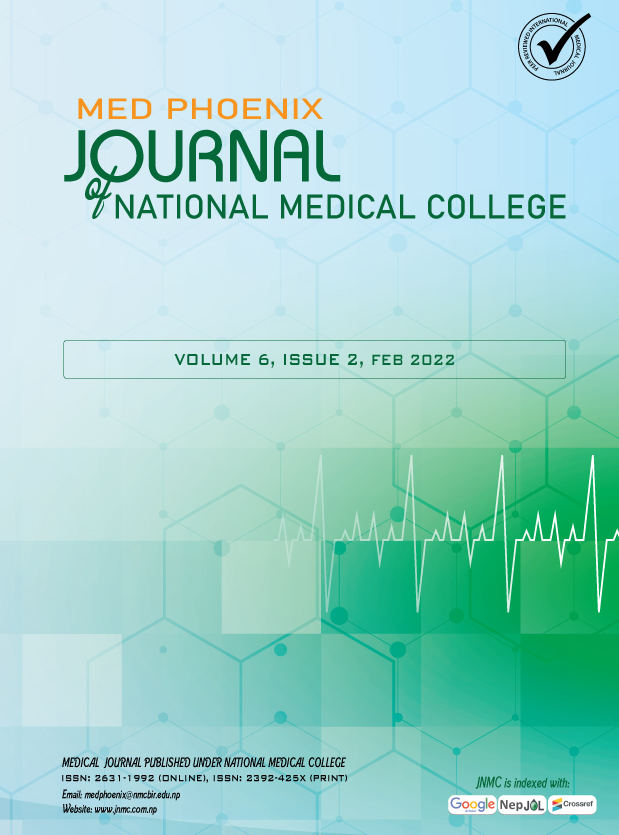Iron Deficiency in Anemic Patients: Study in a Tertiary Care Centre
DOI:
https://doi.org/10.3126/medphoenix.v6i2.37070Keywords:
anemia, hemoglobin, iron deficiencyAbstract
Introduction
Anemia is a clinical abnormality characterized by a reduction in hemoglobin concentration below the normal for age and sex. It can be of different types, the most common being iron deficiency anemia which affects mostly pregnant and lactating females and growing children in the developing world.
Materials and Methods
This was a hospital-based observational study conducted at National Medical College and Teaching Hospital, Pathology Department, Birgunj, Nepal. Patients above the age of 10 years of both sexes (male and females) having anemia ( males having hemoglobin level < 13 gm/dl and females having hemoglobin level < 12 gm/dl ) were included. After a detailed history, preliminary blood tests including complete blood counts, peripheral smear, and reticulocytes count were done. In patients suspected (microcytic hypochromic blood picture and normal reticulocytes count ) to have iron deficiency anemia, serum ferritin was done to confirm the diagnosis. Patients under the age of 10 years and those patients having blood malignancies (acute or chronic leukemia) were excluded from the study.
Results
Sixty anemic patients were found to have iron deficiency. Females were affected more (66%) with iron deficiency anemia than males (34%). There were two peaks (30% and 21%) in age groups 10 – 20 years and 61 – 70 years. Complete blood counts revealed a significant decrease in the value of red cell indices like mean corpuscular volume in 70% patients (Normal MCV 80 to 100 fl) and mean corpuscular hemoglobin in 72% patients (Normal MCH 27 to 33 pg ). On peripheral smear, it was seen that most of the patients (72%) had microcytic hypochromic blood pictures. Iron deficiency anemia was more common in rural areas.
Conclusion
Iron deficiency anemia was the most common type of anemia. It is more common in females and the prevalence is more in rural areas.
Downloads
Downloads
Published
How to Cite
Issue
Section
License
Copyright (c) 2022 Med Phoenix

This work is licensed under a Creative Commons Attribution 4.0 International License.
Copyright on any research article is transferred in full to MED PHOENIX upon publication. The copyright transfer includes the right to reproduce and distribute the article in any form of reproduction (printing, electronic media or any other form).
© MEDPHOENIX
![]()
Articles in the MED PHOENIX are Open Access articles published under the Creative Commons CC BY License (https://creativecommons.org/licenses/by/4.0/). This license permits use, distribution and reproduction in any medium, provided the original work is properly cited.




